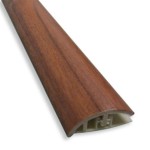Laminate flooring is a popular choice for many homeowners due to its affordability, durability, and stylish look. However, in order to ensure that your laminate flooring lasts for years to come, you need to take the extra step of installing foam underlayment beneath it. Foam underlayment is a type of cushioning material that helps protect laminate flooring from moisture, wear and tear, and other potential damage. It also provides a softer, more comfortable feel for the floor. In this article, we’ll discuss the various benefits of using foam underlayment for laminate flooring and explain why it’s essential for a successful installation.
What is Foam Underlayment?
Foam underlayment is a type of cushioning material that is installed beneath laminate flooring. It’s typically made of polyethylene, polypropylene, or polyurethane foam and comes in a variety of thicknesses ranging from 1/8” to 1/2”. The type of foam underlayment you choose will depend on the type of laminate flooring you’re installing, as well as the level of cushioning you need. Foam underlayment helps protect laminate flooring from moisture, wear and tear, and helps to reduce sound transmission.
Benefits of Foam Underlayment for Laminate Flooring
There are several benefits to using foam underlayment for laminate flooring. It provides additional cushioning, which helps protect the floor from damage caused by everyday wear and tear. It also helps reduce sound transmission, making it easier to enjoy your music or conversations without worrying about disturbing your neighbors. Additionally, foam underlayment helps protect laminate flooring from moisture, which can cause warping and other damage. Finally, foam underlayment adds a softer, more comfortable feel to your laminate flooring.
Types of Foam Underlayment
There are several different types of foam underlayment available, including polyethylene, polypropylene, and polyurethane. Each type of foam has its own unique advantages and disadvantages. Polyethylene is the most affordable option and provides basic cushioning and water protection. Polypropylene is more expensive, but provides superior cushioning and water protection. Polyurethane is the most expensive option, but offers excellent cushioning and water protection.
Installation Tips
When installing foam underlayment for laminate flooring, it’s important to follow the manufacturer’s instructions carefully. Start by laying out the underlayment in the room and trimming it to fit the space. Then use a foam roller to press the underlayment down firmly. Make sure to pay special attention to the corners and edges, as these are the areas most prone to damage. Finally, use a tape measure to make sure the underlayment is level, then secure it in place with adhesive.
Conclusion
Foam underlayment is an essential component when installing laminate flooring. It helps protect the floor from wear and tear, moisture, and sound transmission. There are several different types of foam underlayment available, and the type you choose will depend on the type of laminate flooring you’re installing and the level of cushioning you need. When installing foam underlayment, it’s important to follow the manufacturer’s instructions carefully and use a foam roller to press it down firmly. With the right preparation, your laminate flooring will look great and last for years to come.














Related Posts









